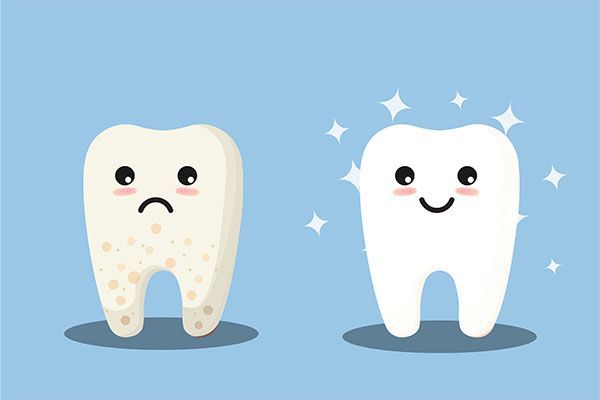What Is a Temporary Dental Filling?

If you have a cavity, chances are you want to have it fixed as soon as possible. This may mean you need a temporary dental filling that helps cover up imperfections and restores functionality to the tooth until your permanent filling is ready to be placed.
What is the function of a temporary dental filling?
A temporary filling provides an interim solution for filling in your cavity, hiding dark stains, and improving tooth sensitivity until your permanent filling is available.
When do dentists use temporary fillings?
Temporary fillings are only used under certain conditions, such as when you have a cavity that is causing severe pain. If you have an extensive cavity that calls for putting a crown over the tooth, a provisional cap may be used until the dental lab creates a permanent crown for you.
A temporary filling is also sometimes necessary to protect a tooth after a root canal and prevent bacteria from re-entering it and causing further issues before the procedure is finished. Finally, some dentists use temporary medicated fillings to ease the sensitivity in your natural tooth until a permanent filling is placed.
How long will a temporary filling last?
The lifespan of a temporary filling varies among people and depends on their overall oral health. Typically, a temporary filling will last anywhere from a few weeks to a few months. Your dentist can tell you approximately how long yours should last and when you should return for your permanent replacement. Keep in mind that because they are made from a softer material, it is important to have interim fillings replaced when the dentist recommends. Without doing so, your temporary filling will break down, crack, and eventually fall out.
How does a dentist place a temporary dental filling?
Placing a temporary filling is a straightforward process that typically takes only about 30 minutes. First, your dentist uses a numbing agent. Then, he or she utilizes a drill to remove tooth decay and perform any root canal or other dental procedure you may need before the filling is placed. Once this process is completed, the dentist mixes the filling material and presses it into the cavity in your tooth, adding more material as needed. Finally, your dentist smoothes any extra material to create the shape of your tooth.
What material is a temporary filling made of?
Temporary fillings are made with softer materials, such as a premixed dental cavit and zinc oxide eugenol cement, that are easier to remove since they are not meant to last. Additional materials may include glass ionomers, zinc phosphate cement, and other intermediate restorative materials.
Temporary fillings often do not match the natural teeth. They may be a white-gray, white-pink, or white-blue hue, or they may be bright white. This makes it easier for your dentist to find the temporary filling when it is time to upgrade to the permanent solution.
What do you need to do to take care of a temporary dental filling?
Since temporary fillings are not as durable, it is important to take good care of your teeth until it is time to place the permanent filling. Your dentist will provide you with specific instructions on how to care for your temporary filling.
Typically, you need to refrain from chewing on the area of the temporary filling for a few hours after your appointment and should avoid biting or eating any hard foods until you have the permanent filling placed. You also need to be more careful about how you brush and floss, paying special attention to the temporary filling to ensure you do not accidentally pull it up and out of your mouth. Finally, avoid using your tongue to play with the filling, causing it to become loose and fall out.
What are the side effects of a temporary filling?
Typically, there are no major side effects to having a temporary filling. However, a small number of people may have an allergic reaction to the materials used in the filling. Signs of an allergic reaction include rash, itching, or swelling in or around the mouth.
Keep in mind that your dentist may need to numb the area again to remove your temporary filling. There usually is not any pain or discomfort, but you may notice some tooth sensitivity after the procedure. Additionally, if you do not return for your permanent filling, the temporary one will break down over time, which could cause an infection to develop.
Conclusion
If you are dealing with a cavity or another serious tooth issue, your dentist may recommend a temporary dental filling. Talk to a professional to find out which options are best for you.
Request an appointment here: https://www.johnscreekteeth.com or call Johns Creek Dentistry at (770) 623-1427 for an appointment in our Johns Creek office.
Check out what others are saying about our dental services on Yelp: Dental Filling in Johns Creek, GA.
Recent Posts
According to an article in Live Science, the first known dental filling was created with beeswax more than 6,500 years ago. These days, the American Dental Association believes about 175 million fillings are completed every year. Although common, there are still some misconceptions about fillings. Understanding the benefits may help you to determine if receiving…
According to the Centers for Disease Control and Prevention, 90% of people develop a cavity by the time they reach the age of 20. A dental filling is often used as a treatment option for this very common dental issue. A filling is relatively easy to place and effectively treats tooth decay. While the treatment…
The process of removing decayed tooth material and replacing it with artificial material, called a dental filling, has been a successful way to fight against cavities for thousands of years. A cavity typically occurs when acid wears away the tooth structure and creates a hole in the enamel. Cavities are often painful, but they can…
Dental fillings are made of artificial substances, and they are used to fill the holes in your tooth left due to decay. They can also fix damaged, cracked, or broken teeth. Fillings are needed to help restore the structure of your tooth and help aid in your dental health for years to come. A dental filling…


